MiniatureBuildings.co.uk : Exploring model buildings of all sizes and styles
- Exhibits (top)
- Home
-
About
Us -
Recent
Articles -
Scales &
Uses - Modelling
-
All
Articles
Miniature Buildings
(top of page)
Home
Articles
- Miniature
Buildings - Home +
-
Recent
Blogs -
All
Articles
.
Miniature Buildings
Some thoughts on building models of all types and sizes
Some thoughts on building models of all types and sizes
Welcome. If you have not visited Minature Buildings before can I suggest you begin with my Aims and Scope article or at the Home Page. If you have visited before - welcome back. I hope this article is of interest to you.
Exhibition Pieces
Museums, Cathedrals, Stately Homes...
The full version of this article (or probably a series of articles) is still waiting to be written. Sorry. But here is a taster. I will someday write more extensivly about it - and have lots of lovely pictures - but I haven't got there yet.
One of my other enthusiasms is driving around Europe in our motorhome. Visiting cathedrals, and other historic sights, is an essential part of any trip. It is a happy joining of two enthusiams that many of the buildings we visit have models of themselves on display. Sometimes just to provide an overview of the building, sometimes illustrating the construction and sometimes with a more specific purpose, such as a tactile model for the blind.
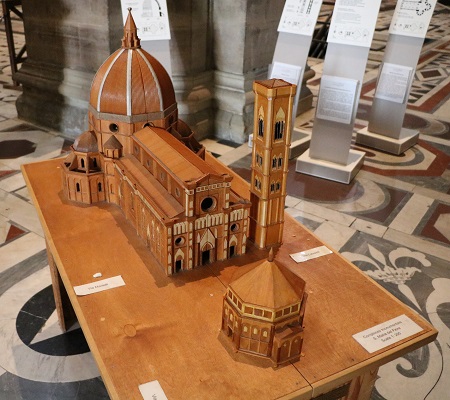

A simple model of the fabulously
ornate Duomo at Florence,
enabling an overview of the whole construction.n
 Above and below, a simple model of the fabulously
ornate Duomo at Florence,
enabling an overview of the whole construction.
Above and below, a simple model of the fabulously
ornate Duomo at Florence,
enabling an overview of the whole construction.

Also inside the Florence Duomo, a very different form of model:
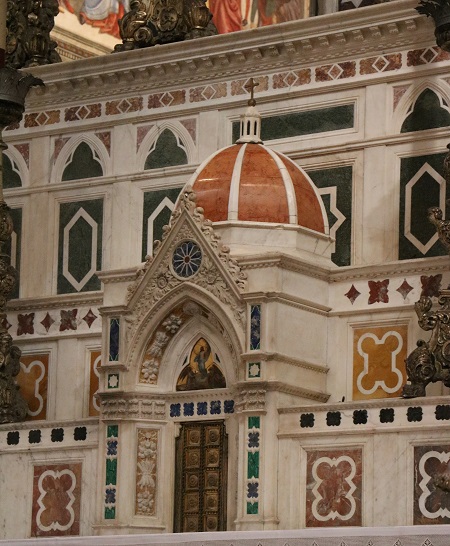

This detailed "model"
is an integral part of the high altar.
 This detailed "model"
is an integral part of the high altar shown below:
This detailed "model"
is an integral part of the high altar shown below:

A lesser known Italian heritage building is the Palazzo dei Priori. Perugia,in the Umbria region of Italy is on our list of places to go back to. We were there on a cold and wet day in October as the second Covid wave was just beginning to rise and it was not looking at its best. The Palazzo di Priori on one side of the main square houses a splendid art gallery/museum. We went in to shelter from the rain and stayed much longer than we had expected to. I'm sure the city has a lot more to offer.
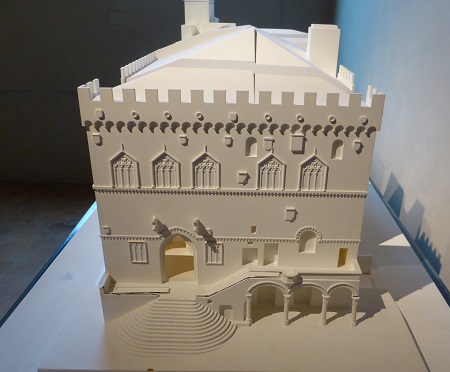
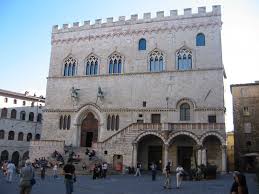
A 1:100 model of the Palazzo dei Priori at Perugia and the real thing
 A 1:100 model of the Palazzo dei Priori at Perugia
A 1:100 model of the Palazzo dei Priori at Perugia
and, below, the real thing

Another view of the same model, with an unusual cutaway section showing the internal floor and room divisions :

The art gallery and museum inside the Palazzo contains, among much else, this piece:
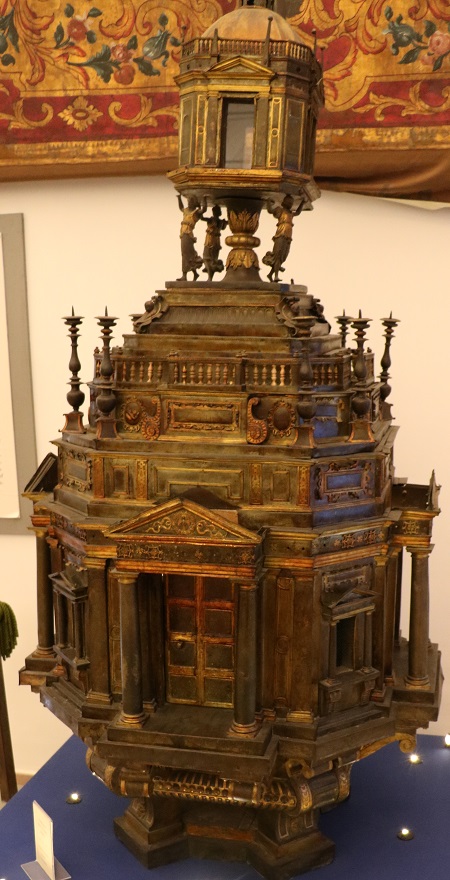
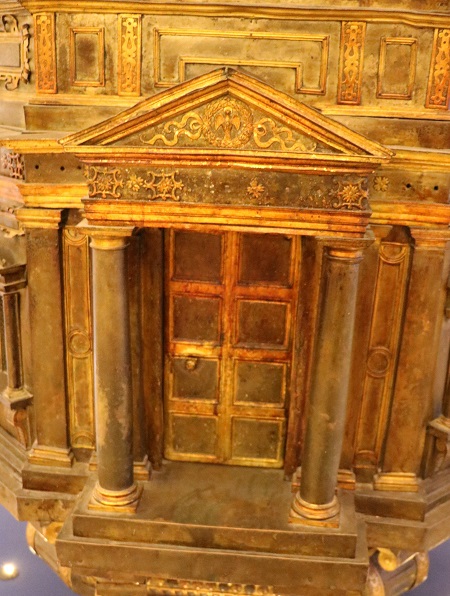
A 'tabernacalo' now in the art museum at Perugia
 A 'tabernacalo' now in the art museum at Perugia and , below, a detail from it.
A 'tabernacalo' now in the art museum at Perugia and , below, a detail from it.



Does the 'tabernacalo' from Perugia count as a miniature building? It is certainly a miniature reproduction of some architectural components, though not I imagine of an actual building. Tabernacle means multiple different things (some of which are certainly buildings) but in this context it is "a small ornamented cupboard or box used for the reserved sacrament of the Eucharist". This example in chiseled, silvered and gilded copper stretches 'small ornamented cupboard' to its limits. It was made in 1571 by Giulio Danti from a drawing by Galeazzo Alessi.
Another example of an art work on the margins of being a miniaure building is featured in another article about the Casa di Loreto.
A couple of hours west of Perugia is the hilltop town of Fermo in the Marche, probably our favourite Italian region. Where we found this:

Believe it or not, this is a nativity
Displayed in the cathedral at Fermo this fantasy building is firmly in a tradition known both in Italy and Southern France of surrounding a nativity scene by an extended village peopled by charecters not just from scripture but also from then contemporay Italian or French life. I discuss these figures a bit more in an article about 'Santons' - the French word for the figures used in these seasonal dioramas.


The central nativity scene and a detail from the surrounding village.
There is more about this piece and other nativity dioramas - 'presepi' - in a separate article.
Continuing the theme of Italian towns and villages, the next model is one displayed in the civic museum at Jesi. One of the lesser known towns of Italy, I can heartily recommend it.
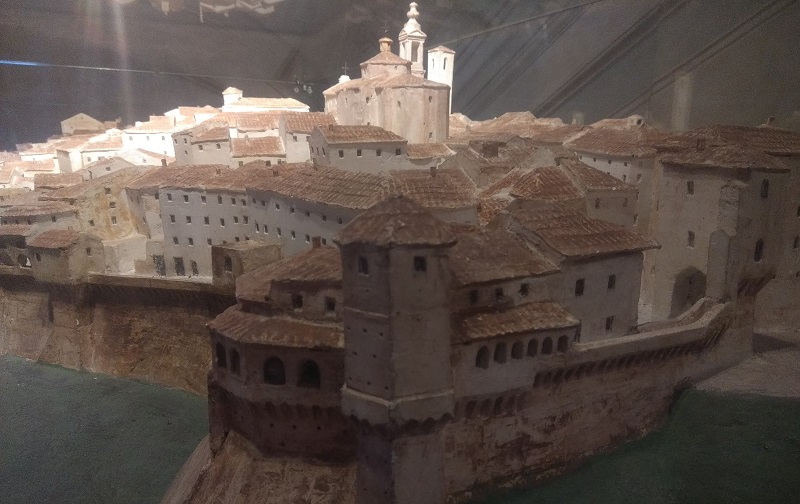
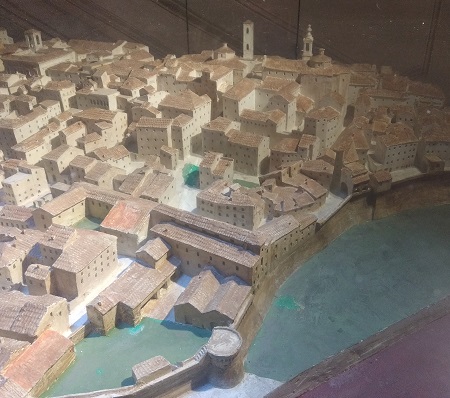
The city of Jesi at 1:200

 The city of Jesi at 1:200
The city of Jesi at 1:200
There is more about this kind of town model in my 'Bronze Town' article.

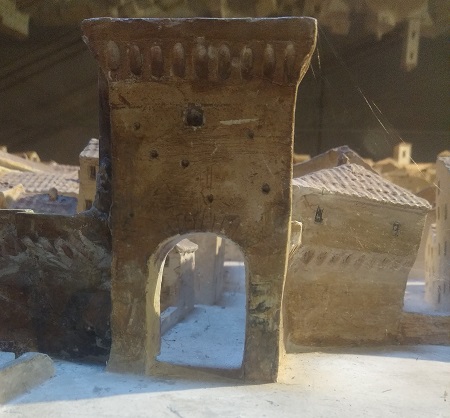
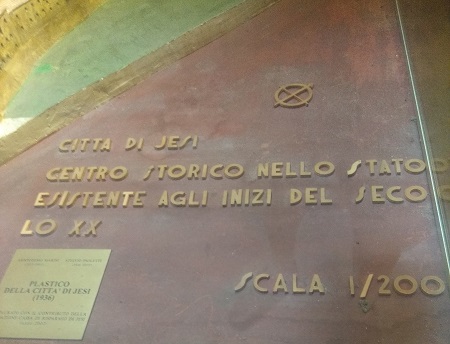
The model of the town was made in 1936 and restored in 2002. The modellers were Aristodemo Marini (1912-1993) and Stelvio Paoletti (1916-1959).

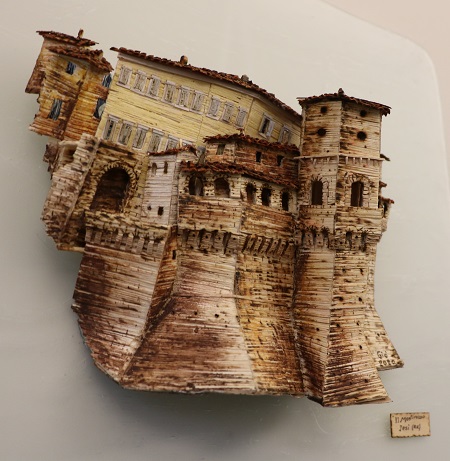
Also in the museum at Jesi were these unique half-relief models, displayed mounted on the wall and available to buy. At a price. Around €2,200 each. So, lovely as they were, I passed on the opportunity.
Much as I love Italy there are clearly models to be found elsewhere. Another love is France and these examples are from the ruined abbey at Cluny in the Burgindy region.
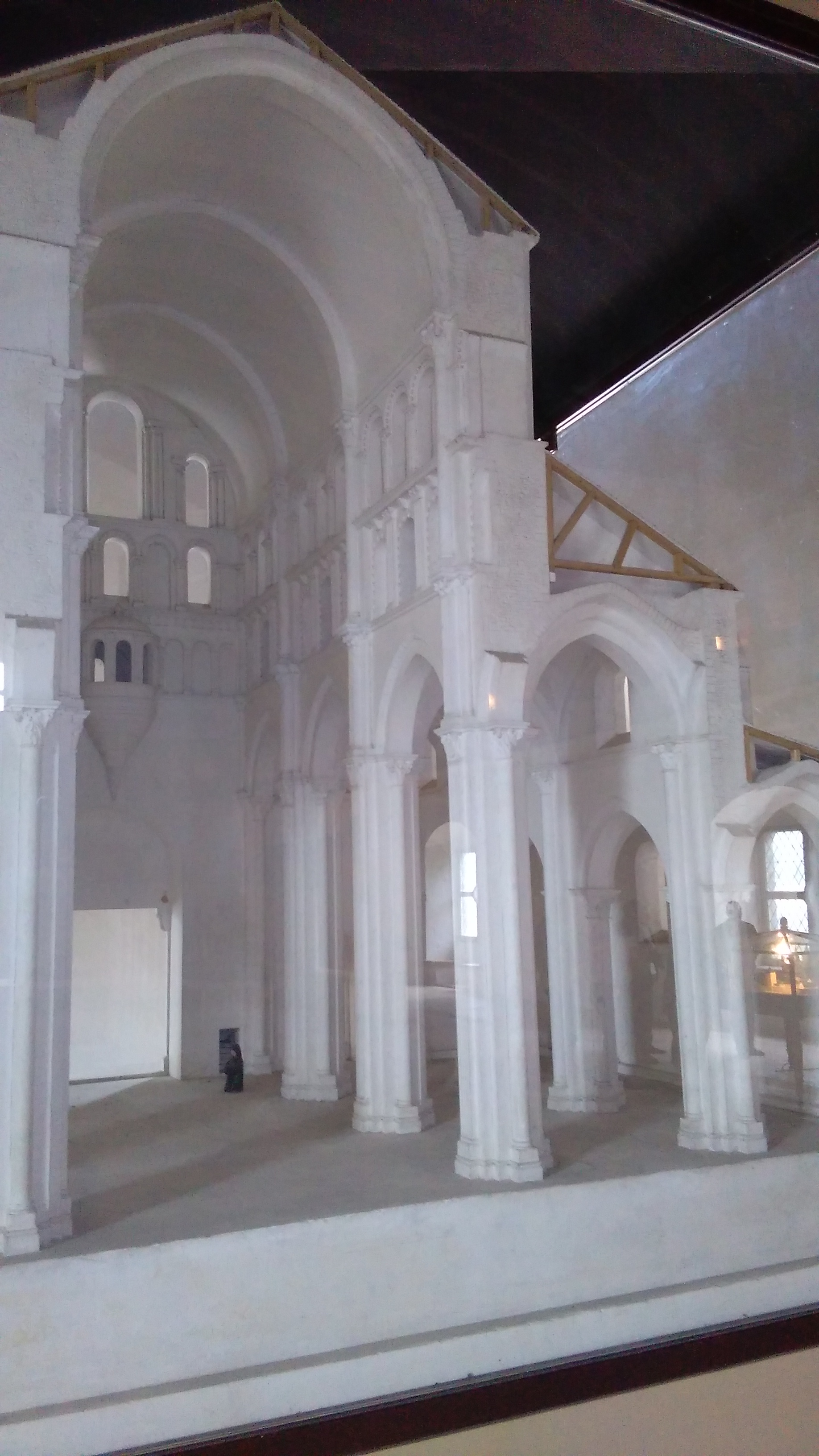
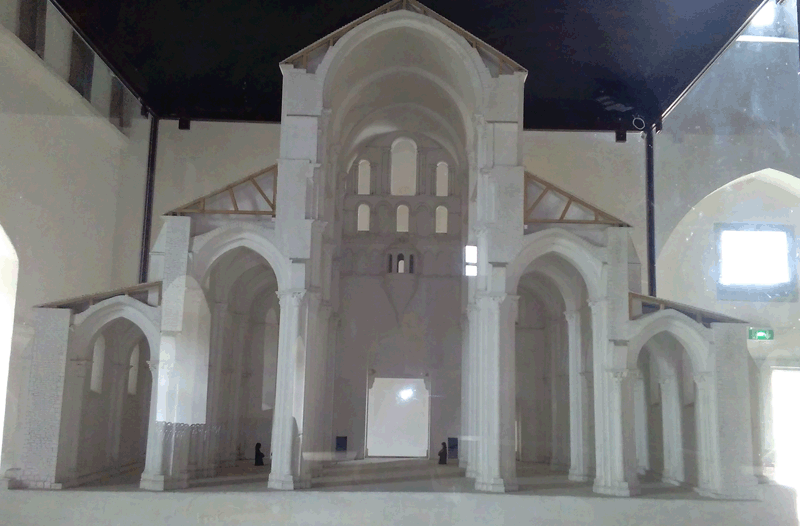

From the abbey at Cluny in France
The next two examples I have also included in my article on models made from card.
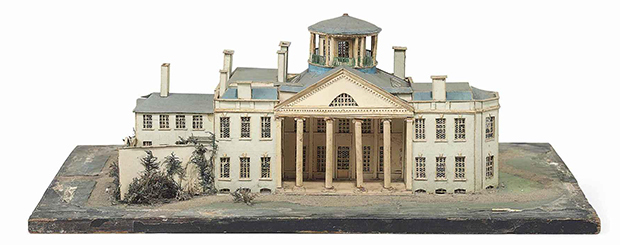
A William IV period cut-card model of Newtown Park, Hampshire, dated 1831 by John Bellamy. In 2013 it sold at Christie's for £3,500. Under a glass dome, inscribed in pen to the underneath 'by ... Bellamy Stantway House Westbury Gloucestershire 1831' and '1003' 8½ in (21.5 cm.) high; 17½ in. (44.5 cm.) wide; 10½ in. (27 cm.) deep
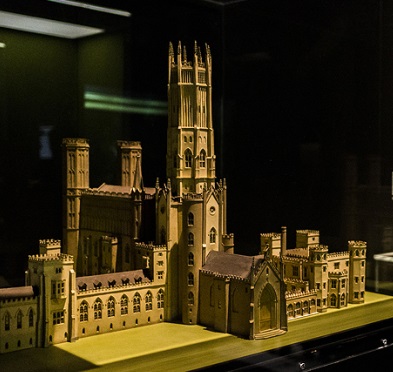
The second is a model of Fonthill Abbey, Wiltshire, a vast Gothic edifice built for William Beckford between 1786-1807.
As always, please
e-mail
Miniature Buildings
if you have something to add. Comments, criticisms,
extra thoughts, pictures, or even complete articles
for inclusion in the Miniature Buildings site
are all welcome. Or if you would like to be added to
my mailing list to hear when a new article is published.
David,
January 2021